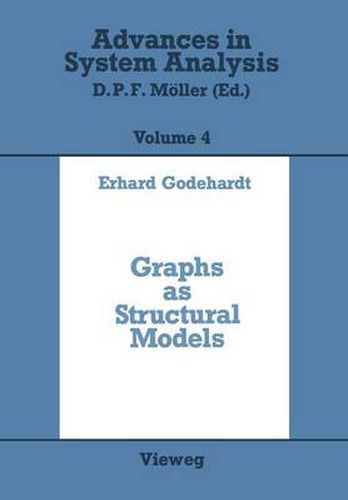Readings Newsletter
Become a Readings Member to make your shopping experience even easier.
Sign in or sign up for free!
You’re not far away from qualifying for FREE standard shipping within Australia
You’ve qualified for FREE standard shipping within Australia
The cart is loading…






This title is printed to order. This book may have been self-published. If so, we cannot guarantee the quality of the content. In the main most books will have gone through the editing process however some may not. We therefore suggest that you be aware of this before ordering this book. If in doubt check either the author or publisher’s details as we are unable to accept any returns unless they are faulty. Please contact us if you have any questions.
The advent of the high-speed computer with its enormous storage capabilities enabled statisticians as well as researchers from the different topics of life sciences to apply mul tivariate statistical procedures to large data sets to explore their structures. More and more, methods of graphical representation and data analysis are used for investigations. These methods belong to a topic of growing popUlarity, known as exploratory data analysis or EDA. In many applications, there is reason to believe that a set of objects can be clus tered into subgroups that differ in meaningful ways. Extensive data sets, for example, are stored in clinical cancer registers. In large data sets like these, nobody would ex pect the objects to be homogeneous. The most commonly used terms for the class of procedures that seek to separate the component data into groups are cluster analysis or numerical taxonomy . The origins of cluster analysis can be found in biology and anthropology at the beginning of the century. The first systematic investigations in cluster analysis are those of K. Pearson in 1894. The search for classifications or ty pologies of objects or persons, however, is indigenous not only to biology but to a wide variety of disciplines. Thus, in recent years, a growing interest in classification and related areas has taken place. Today, we see applications of cluster analysis not only to. biology but also to such diverse areas as psychology, regional analysis, marketing research, chemistry, archaeology and medicine.
$9.00 standard shipping within Australia
FREE standard shipping within Australia for orders over $100.00
Express & International shipping calculated at checkout
This title is printed to order. This book may have been self-published. If so, we cannot guarantee the quality of the content. In the main most books will have gone through the editing process however some may not. We therefore suggest that you be aware of this before ordering this book. If in doubt check either the author or publisher’s details as we are unable to accept any returns unless they are faulty. Please contact us if you have any questions.
The advent of the high-speed computer with its enormous storage capabilities enabled statisticians as well as researchers from the different topics of life sciences to apply mul tivariate statistical procedures to large data sets to explore their structures. More and more, methods of graphical representation and data analysis are used for investigations. These methods belong to a topic of growing popUlarity, known as exploratory data analysis or EDA. In many applications, there is reason to believe that a set of objects can be clus tered into subgroups that differ in meaningful ways. Extensive data sets, for example, are stored in clinical cancer registers. In large data sets like these, nobody would ex pect the objects to be homogeneous. The most commonly used terms for the class of procedures that seek to separate the component data into groups are cluster analysis or numerical taxonomy . The origins of cluster analysis can be found in biology and anthropology at the beginning of the century. The first systematic investigations in cluster analysis are those of K. Pearson in 1894. The search for classifications or ty pologies of objects or persons, however, is indigenous not only to biology but to a wide variety of disciplines. Thus, in recent years, a growing interest in classification and related areas has taken place. Today, we see applications of cluster analysis not only to. biology but also to such diverse areas as psychology, regional analysis, marketing research, chemistry, archaeology and medicine.